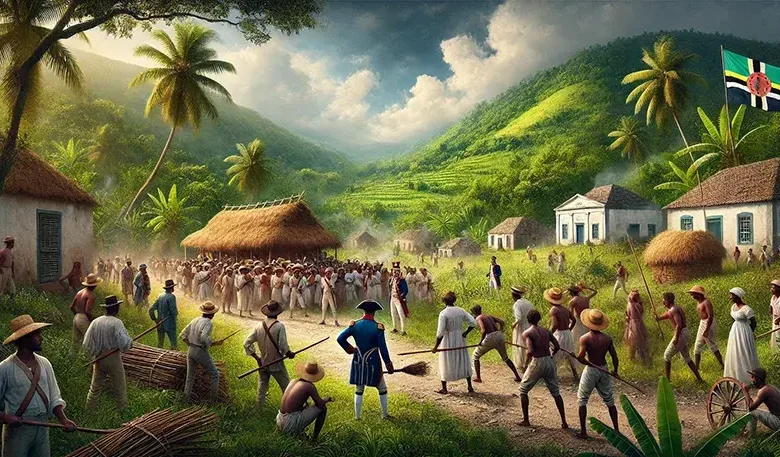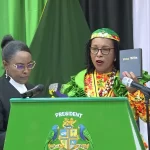La Guerre Negre (Census Riots) in Dominica,1844

La Guerre Negre (Census Riots) 1844 marked a significant moment in Dominica’s post-emancipation history. Following complete emancipation in 1838, thousands of formerly enslaved individuals gained their freedom but faced economic struggles, unresolved land disputes, and persistent distrust of colonial authorities. These challenges set the stage for tensions to erupt when government policies appeared to threaten hard-won freedoms.
Post-Emancipation Struggles
Though legally free, many in Dominica found emancipation incomplete in practice. Access to farmland was limited, as colonial administrators tightly controlled former plantations. Land disputes became widespread, with freed individuals seeking autonomy and economic security through farming. The countryside was rife with unrest, and any government measure—such as the 1844 census—was met with suspicion.
Census Suspicion and Rural Resistance
The colonial government attempted to conduct an islandwide census in 1844 to gather demographic data. However, rural communities, especially in Colihaut, Canefield, and Grand Bay, misinterpreted the census as a precursor to re-enslavement. Propaganda fueled fears that enumerators were collecting names to reinstate slavery. These anxieties, rooted in the recent memory of bondage and ongoing struggles for autonomy, spurred resistance in areas south of Roseau.
The Riots and Martial Law
On June 3, 1844, census takers venturing into farming communities encountered armed residents who refused to cooperate. Villagers wielding sticks and cutlasses abandoned their homes to form defensive groups. Enumerators were beaten in Pointe Michel and Canefield, forcing the government to declare martial law. Troops and militias were dispatched to hotspots like Colihaut and Grand Bay. Retaliatory measures included property destruction, arrests, and public displays of brutality, such as the execution of a dissident in Grand Bay, whose head was displayed on a pole as a warning.
Aftermath and Legacy
Trials held in July resulted in one public execution in Pointe Michel and pardons for several others. Eventually, many cases were dismissed due to judicial fatigue. The arrival of the Governor of the Leeward Islands, accompanied by a warship, helped quell fears by affirming that slavery could not be legally reinstated.
The La Guerre Negre riots revealed the deep mistrust between Dominica’s rural population and colonial authorities. It cemented the resilience of newly freed communities determined to safeguard their freedom and autonomy. The event remains a pivotal chapter in Dominica’s history, reflecting the lingering impact of slavery and the ongoing fight for justice and equality.




